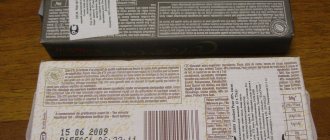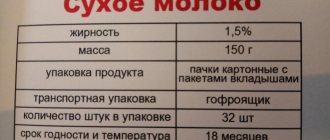Hello everyone, Olga is with you as always, perhaps you will need information on storing food and various things and I will tell you about methods for storing smoked fish. Maybe some details may differ, as was the case with you. Attention, always read the instructions of the things you buy for cleaning the house or the chemicals that help to store them. I answer the simplest questions. Write your questions/wishes and secrets in the comments, and together we will improve and supplement the quality of the material provided.
Smoked fish, cooked at home with your own hands, is incredibly tasty and aromatic. It often happens that it is impossible to eat the product immediately after smoking. Therefore, a number of questions arise: How to store smoked fish? How many days does hot and cold smoked fish last? Is it possible to store frozen fish in the refrigerator? What storage conditions should be observed to extend the shelf life of fish and preserve its beneficial properties?
Storage conditions for cold smoked fish
Cold smoked fish may be affected by mold during storage. Therefore, it is very important to provide access to fresh air.
The longer a product is stored, the lower its taste becomes.
Do you use expired food for cooking at home?
Yes, the main thing is to process it if it is meat or expired kefir for pancakes.
27.12%
No, it is very dangerous and not useful.
37.57%
If the products have fungus or mold, then we throw them away; if they are a couple of days past their expiration date, we use them for food, even without heat or other treatment.
35.31%
Voted: 1637
How long does smoked fish last in the refrigerator?
Fish that has been hot smoked can be stored in the refrigerator for up to 3 days, for cold smoking - 8-10 days.
It is also important to provide clean air flow to prevent mold.
Smoked fish can be frozen in vacuum packaging, which will extend its shelf life. If you freeze the product, the shelf life will be about three months.
How to tell if fish has gone bad
In the absence of visible defects, the first sign of spoilage is an unpleasant odor.
It is necessary to monitor the status of stocks. If you have any suspicions, you need to examine them carefully. Fine:
- uniform golden color;
- a delicious smoke aroma spreads;
- elastic consistency of meat;
- the cut is juicy, pinkish-gray.
Badly:
- rotten smell;
- mold inside the belly;
- slippery to the touch;
- lies on the table without packaging.
If the skin in the area of the head and tail is covered with a dry, thin, white coating, this is due to salt crystals appearing when the liquid evaporates. In this case, the product is edible. You just need to wipe the salt with a clean damp cloth.
When the surface of the carcass is unnaturally colored, slippery, a gray-green coating appears - this is an indicator of the activity of harmful bacteria. It is impossible to revive rotten fish under existing conditions.
If areas of dry mold appear on the surface, do not wipe it off, freeze it, smoke the fish again, or eat it. No one can guarantee that there are no molds inside the meat, even if they are not visible. But colonization of the smokehouse, freezer and stomach by harmful microorganisms is quite possible.
Fish consists of protein and, when spoiled, is hazardous to health. To avoid trouble, the product must be carefully protected from high temperatures, excessive humidity and sun, and not exceed the expiration dates specified by the manufacturer.
Proper packaging, compliance with storage conditions, and regular checking of supplies will help with this. And there is always a reason to eat aromatic, smoky deliciousness.
Next Meat, poultry, fish Storing salted lard at home
How to cook halibut using the hot method?
At home, halibut can turn out no worse than store-bought halibut. To do this you need your own smokehouse and, of course, fish. We bring to your attention delicious smoked steaks.
- We cut the washed halibut carcass into steaks.
- Rub with a mixture of salt and peppers (black, white, pink, red);
- Marinate for several hours.
- We put foil on the grill - this is necessary so that the fish can be easily removed from the grill. Don't forget to make holes in the foil for the fat.
- Place in the smokehouse for 25–30 minutes.
- Note: If you choose poor sawdust for smoking, the halibut may taste bitter. Choose alder wood chips or mix three tablespoons of alder wood chips with other wood chips. Pour a little water into the pan so that the released fat does not burn and thereby spoil the taste of the finished product.
As you can see, smoking halibut is not difficult, and the result is amazing - the tasty, buttery fish will appeal to everyone who is lucky enough to try it. Don’t forget to share your recipes on the blog, perhaps yours will turn out to be the most delicious.
What is a fish like halibut? The harm and benefits of this product will be described below. We will also tell you about the features of this fish and its use in cooking.
Compared to other types of fish, halibut smokes quickly. It is important to monitor the temperature of the smoke; it should be within +25-30 degrees. The lower the temperature, the longer you need to smoke. So, at +20 degrees, white fish is smoked for at least 25 hours. It is convenient to monitor the temperature in the smokehouse using a special thermometer.
Let's work together to make the unique material even better, and after reading it, we ask you to repost it on a social network convenient for you. net.
Salt
Salted fish has already undergone primary processing. The terms and methods of its storage differ from fresh ones.
- How to preserve salted herring at home
Vacuum packaging. If you purchased the product in the manufacturer's vacuum packaging, store it in it;
The absence of air will allow salted fish in vacuum packaging to maintain quality for up to 30 days
- Paper. The salted fish can be wrapped in parchment paper or cloth and placed in the refrigerator;
- Solution and sunflower oil. Fish can be stored in saline solution or sunflower oil for 90 days if the container is tightly closed;
- Wooden boxes. Dry salting of fish in wooden boxes under pressure will help preserve several kilograms of fish for up to three months. This method is a great space saver in the refrigerator.
- How long does herring last in the refrigerator?
Salted herring can be stored in the refrigerator from several days to six months. It all depends on the chosen storage methods.
- Brine - up to 4 weeks;
- Without brine in glass or plastic containers - 2 days;
- Vacuum packaging - 30-35 days;
- Sunflower oil - 3-4 days;
- Freezer - 6 months.
- Is it possible to freeze salted red fish?
Red fish can weigh 3-4 kg. It's not always possible to eat it quickly. Then lightly salted fish can be frozen. For this:
- Dry the fillets using napkins.
- Wrap each piece in a clean cloth without washing off the salt and spices.
- Let the red fish chill in the refrigerator for 24 hours.
To prevent the shelf life of the fish from being shortened and it not getting dry in the refrigerator, cover it with cling film. Photo: ad-cd.net
- The next day, remove the cloth, place each piece in a plastic bag, expel excess air and place in the freezer.
How to save smoked fish product
Knowing how to store hot smoked fish, you can avoid its premature spoilage. However, even if all standards are followed, the snack may become covered with a dry white coating. This means that you need to save a product that can still be eaten. In the absence of other signs of spoilage, housewives wipe the carcass with gauze soaked in refined vegetable oil.
Mold may also appear on the snack. If the smell is normal, the texture is preserved, the fish is not slippery and has the right shade, it is soaked in a salt solution. Then it is subjected to re-smoking or heat treatment.
Important! You shouldn’t risk saving a clearly spoiled carcass. Such a product should be disposed of immediately.
How to store live
Live fish is an ideal product. However, if caught in polluted waters, it can be dangerous.
If the fish is alive, then expiration dates are not established even by GOST. However, the conditions of transportation and sale are regulated
Particular attention is paid to the fact that:
- Live fish should be stored in water with a temperature difference between the tank and the reservoir of no more than 4 °C;
- the aquatic system must be aerated and supplied with running water.
At home
Live fish are stored in water. In this case, the liquid must be completely changed every day.
During the cold season, low water temperatures can be maintained by nature itself. In summer, it is better to lower the container with fish into the basement.
Fishing
Experienced fishermen, in order to deliver the fish home fresh, cover it with nettles. This is a dubious method. At high ambient temperatures, nettle does not help.
If there is a lot of fish and the journey is long, it must be gutted at the fishing site, washed and sprinkled with salt.
Other ways to store smoked fish
Human life is full of surprises and surprises, so we will look at all the ways to store hot smoked fish.
So, if you do not have a refrigeration unit at hand, and you want to preserve freshly smoked fish in its original form, we recommend that you familiarize yourself with the most non-standard ways to preserve the quality of the product.
Fresh air
Fish smoked at a picnic is a delicacy. A fire, crackling wood, the fragrant smell of fish that you would like to preserve, but there is no refrigerator in nature. If you can't eat a portion right away, here are some ways to help:
Storage in a nearby body of water. This method is unusual and is suitable for those who have a sealed bag or container on hand. Freshly baked fish is placed in it, a rope is tied, after which it is lowered into the water.
If you don't have a rope at hand, you can simply lower the container with the product to the bottom of the nearest bank or stream.
Storing fish in a pit. Here you act as the builder of a small cellar. The deeper you make the hole, the lower the temperature will be.
Before immersing the product, it is recommended to wrap it in cling paper or film to prevent soil from penetrating into it. Be sure to cover the pit from the sun, leaving mini gaps for air circulation.
Box
If you happen to smoke a batch of fish that doesn't have room in the refrigerator, you might want to think about a drawer.
To preserve the original taste and quality of the fish, we need the following:
- Box.
- Sawdust, shavings.
- Foil.
Choose the amount of auxiliary materials and the size of the box depending on the amount of fish.
The sequence of actions is simple:
- We prepare the box by pouring a small layer of sawdust or shavings onto its bottom.
- We take hot smoked carcasses and wrap each one with foil.
- Place the fish on a layer of sawdust prepared in a box.
- We repeat the procedure until the fish runs out.
- Close the box and place it in a cool place.
Under such conditions, hot-stored fish will retain its freshness for more than 5-6 months from the day it was placed in the container.
Saline solution
The saline solution is prepared simply:
- Salt is taken.
- Water is taken.
- The container is being prepared.
- The ingredients are mixed in a ratio of 1 to 2.
After preparing the solution, you need to start working on the fish. Here the type of smoking does not matter. The storage method is suitable for both types of smoking. The carcasses of the smoked product are wrapped in pieces of cloth or thick food paper. After that, they are immersed in a salt solution prepared in advance, the container is closed and sent to the refrigerator:
- The shelf life of hot smoked fish is 15-20 days.
- The shelf life of cold smoked fish is 20-40 days.
Attic
The attic is cool, which creates favorable conditions for storing both fish. Fish carcasses can be placed in wooden boxes or hung. Hanging is more suitable for cold smoked fish due to the fact that it is less fluffy. The boxes are suitable for hot smoked fish (method with sawdust and foil).
The main thing is to follow the storage rules:
- the moisture contained in the air must be at an optimal level;
- ultraviolet radiation should not reach it;
- eliminate the appearance of flies and other insects that can harm the fish;
- We recommend using food paper if you want to hang it in the attic.
Choose the method that suits your case. With any of them, the fish will retain its original taste and nutritional properties.
General sanitary requirements
Fish itself is a perishable product. Its meat is a favorable environment for the reproduction and development of pathogenic microorganisms. Dangerous E. coli, Proteus, Staphylococcus aureus, and Salmonella can settle in it. If stored improperly, mold and yeast may develop on the surface. If the carcass was smoked along with the entrails, then under unfavorable conditions the flesh may become contaminated with worms.
Let's talk about how to store smoked fish correctly and for as long as possible. In order for smoked products to be stored longer, the following sanitary requirements must be observed at all stages of preparation and storage:
- you need to choose only fresh and absolutely healthy fish (without parasites) for preparing smoked meats; be sure to store the fish in the refrigerator before use;
- observe antiseptic measures during processing of raw materials, during salting, during smoking and in preparation for storage;
Fresh fish - During hot or cold smoking of fish, it is necessary to check the temperature in the thickness of the muscles. For hot smoked products, it must be at least 80 °C, otherwise the product will not withstand long-term storage;
- Smoked products cannot be stored warm; they must first be kept for cooling, otherwise, at the initial stage, the storage temperature of hot or cold smoked fish will be violated;
- each copy must be placed in separate packaging. If something begins to deteriorate during storage, other smoked products will not suffer from this;
- If possible, you should use vacuum packaging - this extends the shelf life of smoked fish;
Storing fish in vacuum packaging - the place where smoked products are stored must be well ventilated;
- to maintain the quality of products, the relative air humidity should be 75-80%;
- the main factor in preserving smoked fish is maintaining the temperature regime (not higher than +6 °C);
- the fat contained in smoked products easily goes rancid (oxidized) under the influence of light, becomes sticky, dark, and bitter in taste, therefore, with any storage method, it is necessary to avoid direct sunlight on smoked products;
- Products should not be left unattended; their quality must be checked periodically. Throw away spoiled smoked meats promptly.
If the listed requirements are violated, then microorganisms and parasites may be present in the finished products, causing them to spoil during storage. To store cold smoked or hot fish, it is packaged in bags, parchment paper, bags made of plastic film, polyethylene cellophane, plastic containers or corrugated cardboard boxes.
Instructions
Smoked halibut.
Today we will cook smoked halibut. More precisely, it is hot smoked halibut. First of all, it’s worth saying that this recipe can be cooked in any smokehouse. Now my backstory. About a year ago I bought myself a small smoker. It is really very small - made in the shape of a barrel. It has only one level, one grate and a maximum capacity of approximately 2 small mackerel.
In fact, as practice has shown. For amateur outdoor smoking, you don’t need any smokehouse with any bells and whistles. The main thing is the size that would suit you. This is the presence of a thermometer, and of course a tray for collecting fat. My smokehouse did not have a thermometer. But the problem was easily solved by ordering a thermometer on Ali Express and having a drill. I got a thermometer, drilled a hole in the smokehouse, inserted the thermometer into it and screwed it on.
So why do you need a thermometer? It's simple to control the temperature during the smoking process. So that you get exactly smoked fish or meat, and not baked/baked in the oven. The smoking temperature is significantly lower than the baking temperature and this is what needs to be controlled.
Halibut fish is not cheap. But I was lucky to buy it at some super promotion for around 250 rubles. for 1 kg. That's why I decided to smoke the halibut. This fish is very fatty and simply delicious when smoked. I was lucky, I caught the fish with caviar. So it turned out to be two dishes in one. Smoked fish and smoked caviar. I bought the fish chilled, but I think you can easily make smoked halibut from frozen raw materials. The question is primarily about price, it seems to me.
To prepare smoked halibut, in addition to the halibut itself, we will need salt, a little coarse pepper, brown or regular sugar, bay leaf and, if desired and possible, 1-2 tbsp. spoons of gin.
We clean the fish, rub it with salt, pepper and everything else. After this, place in a metal container, cover and marinate overnight in the refrigerator. The next day, take the fish out of the refrigerator, wash, dry and smoke for about an hour at a temperature of 80-90 degrees.
Do you know what is the most difficult thing about this recipe? After you remove the halibut from the smoker. Let it cool. Wrap it in baking paper and put it “to breathe for two hours” in a cool place, but not in the refrigerator! These two hours will be the most difficult for you. The aroma of hot smoked halibut will attract you and your loved ones like a magnet.
And now the recipe in more detail.
(Visited 618 times, 1 visits today)
How to store the finished product: terms, conditions, containers
Even if you bought fresh fish and cooked it quickly, the shelf life of the dish is not long.
The time allotted for consuming a ready-made fish dish is literally measured in hours due to the rapid development of microflora
Boiled, baked, fried
Any cooked and uneaten fish, once cooled, should be placed in a container and transferred to the refrigerator. Shelf life 12 hours. If you don't eat it, freeze it.
If the fish soup has been cooked, do not pour it into a container and do not remove the fish. Place the container in which the dish was prepared in the refrigerator. After storing in the refrigerator, you need to bring it to a boil and only then start eating.
Smoked
A cold or hot smoked product brought home must be eaten within 48 hours. A household refrigerator does not allow you to store smoked fish for longer.
If there is a lot of fish, wrap it in two plastic bags or put it in a container and put it in the freezer. If frozen, the product can be stored for up to 30 days.
Sun-dried, dried
When buying such fish, give preference only to labeled products. The manufacturer himself determines the shelf life and indicates it on the packaging. Conditions of detention are also described. After opening the package, the product must be eaten.
Storage of dried fish depends on the amount of fat in the product. This is difficult to determine visually. The less fatty the fish, the longer its shelf life:
- fatty (more than 10%) can only be stored in the freezer at -18 °C for up to 5 months;
- non-greasy - in a dark, dry, ventilated area for up to 2 months.
Dried in the freezer can be stored for up to 5 months, at a temperature of 0 to 6 °C - up to two.
To prevent dried fish from drying out, you can wrap it in parchment, put it in a container with a tight-fitting lid and put it in a dark, cool place
Salty
Storing salted fish depends on the salt content in it. The saltier the product, the longer it can be stored. However, production times of 4, 6, 9 months apply only to large freezers.
At home, salted fish can be:
place in a 7% salt solution and refrigerate for up to 10 days (in this case, it does not matter how much salt was there before); wrap it in a plastic bag and put it in the freezer for a month; cut into portions (without bones), place tightly in a container, fill with sunflower oil to the top and store in the refrigerator for up to 10 days, in the freezer for up to a month.
Composition and beneficial properties
The product contains fats and proteins that are easily absorbed by the body. In addition, when smoked, eel retains its beneficial qualities. A rich set of vitamins, micro- and macroelements has a positive effect on:
- vision;
- skin regeneration;
- bowel function;
- activity of the heart and blood vessels;
- state of the nervous system.
100 gr. product contains:
- proteins – 17.9 g;
- fat – 28.6 g.
Eel is one of the few species in which the amount of fat exceeds protein, which affects the calorie content. The product contains over 300 Kcal. The fats contained in fish belong to the Omega group, which are necessary for the body to normalize cholesterol levels.
How to tell if smoked fish has gone bad: the first signs
The following signs of damage can be noted:
- The product slips in your hands and is coated with a slightly sticky mucus.
- A greenish-gray layer of plaque spreads over the surface.
- The smell of fish is sour.
To understand the condition of the product, you need to remove the packaging and make an incision on the spine. If you sniff this place, you can smell the unpleasant smell of rotting. At this stage of decomposition, the product can no longer be eaten.
Mold also looks like a white or black-green layer of slightly damp “fluff,” that is, densely branching thin and white threads. If you really don’t want to get rid of the fish, its meat can still be saved and eaten. To do this, you need to rinse the carcass, wash it in brine and put it through the smoking procedure again.
At the end of the process, the fish will become much tougher. However, if everything is done correctly, it will begin to emit a pleasant smell. He will confirm that the fish can now be safely eaten.
Fish is a perishable product, so its safety must be constantly monitored. Even if all storage conditions are provided, the safety of the product cannot be guaranteed, since much depends on how well the fish preparation technology was followed. When a product begins to deteriorate, it is easy to notice by external signs, such as:
- If you touch the fish, you can easily determine that the product has already begun to deteriorate: it will become slippery to the touch.
- The fact that the fish has begun to deteriorate can be determined by the appearance of a green or gray coating.
- The fish develops a sour aroma, which is noticeably different from the pleasant fishy one.
If it is discovered that something is wrong with the fish, it is better to check the product for quality. To do this, you need to take and unfold the paper or foil. In the area of the spine, a deep incision is made with a sharp knife. After this, you need to determine what aroma comes from this slot. If the fish has begun to rot, then this smell cannot be confused with any other.
If a white coating is detected during a visual inspection, this does not mean that the fish has begun to deteriorate. Areas with such plaque are treated with a cotton swab dipped in vegetable oil. But this indicates the fact that the fish must be eaten in the near future.
Smoked fish is a very tasty product that can quickly spoil if it is not eaten in the first 3 days. Then it will still retain the maximum amount of nutrients.
Unfortunately, smoked fish is contraindicated for some categories of people suffering from gastrointestinal problems. In addition, it is necessary to control the dose of consumption of this fish, otherwise problems with the gastrointestinal tract will occur. You should also not discount the category of people who have a personal intolerance to seafood.
Smoking fish for beer, long-term storage
Even if all storage conditions are observed, the safety and quality of the fish cannot be guaranteed. Therefore, it is necessary to constantly visually monitor the appearance of the product.
External signs of deterioration:
- musty and sour smell;
- gray-green coating;
- the appearance of mucus.
Often a product can begin to deteriorate from the inside, without external signs. To check, you need to make a small cut in the ridge area. If there is a specific unpleasant odor, it means that the process of rotting has begun. This product should not be used.
If mold appears, it is also possible to restore taste. Rinse the fish in brine or cut out the moldy part and re-smoke it. But after this the product will become more rigid.
You can smoke both fresh and frozen fish. When choosing a frozen product, it is better to choose mackerel or pink salmon. Before the smoking process, the fish must be quickly defrosted in water at a temperature not exceeding 10℃. Thawed fish should not be subjected to mechanical processing (beating, squeezing). After defrosting, the fish must be salted and smoked.
Mechanical processing of fish
What fish is suitable for cold smoking? Can be used both fresh and chilled and frozen, freshwater and sea. The freshness levels of different types of fish may vary slightly. But in general, the following signs indicate high-quality fresh fish: the color of the gills is bright red, the smell is without “odor,” the eyes are bulging, glossy, the flesh is not flabby, elastic, and adheres tightly to the bones.
Chilled fish
Preparing fish for cold smoking at home includes the following operations:
- defrosting (for frozen raw materials);
- cleaning scales (if semi-finished products for smoking are used without them);
- gutting;
- cutting;
- washing;
- drying.
Top articles: How and where should olive oil be stored?
If frozen raw materials are used, they are defrosted in water or in air at a temperature not exceeding 20 °C. Otherwise, the flesh will become flabby, and the quality of the smoked meat will suffer as a result. You can combine thawing with salting if the raw materials do not require processing.
Cleaning fish from scales
To smoke fish in a cold smokehouse, specimens with large scales are first cleaned against the growth of the scales with a fish scaler scraper or a knife. If the scales are small, then you can leave them (for example, in salmon).
Some fish species are skinned (eel, sometimes perch or sockeye salmon).
If there are spiny fins, it is advisable to remove them so as not to injure yourself during further processing.
Removing fins from fish
Semi-finished products for cold smoked fish can be prepared in the following types:
- ungutted;
- whole carcasses with heads;
- gilled (with gills removed);
- chilled;
- whole carcasses without heads;
- in the form of a beam back;
- in layers;
- half layers;
- in pieces;
- in the form of fillet.
Small specimens of fish are used ungutted.
For the rest, for gutting, a cut is made along the abdomen between the pectoral fins, starting from the head to the anal fin. Through the resulting incision, the insides are carefully removed so as not to crush the gallbladder. They clean the abdominal cavity, removing blood clots and dark film.
For fish used with the head, the gills (gills) can be cut out, since microbes multiply quickly in them, causing the fish to spoil.
In some species, the pectoral fins are cut out, capturing part of the abdomen. The insides are pulled out through the resulting hole. This type of cutting is called chilled.
Removing the head of a fish
For large fish, the head is cut off at an angle of 90°.
To obtain a layer with the head, cut through the flesh from the back, cut the rib bones, cut the head lengthwise into 2 parts, and unfold the carcass like a book. Remove the entrails. The head can be removed.
To get a fillet, cut off the head and use a sharp knife to cut off the top layer along the spine. The lower layer remains with the spine. They cut it from the vertebrae, you get 2 fillets with skin and rib bones. Additionally, you can remove the rib bones and also remove the skin.
Fish fillet with skin
It is allowed to prepare semi-finished balyk for smoking. The jaw of the fish is cut off with the lower part of the abdomen in such a way that most of the mass of these semi-finished products is the flesh of the back.
Pieces of large fish are cut from unskinned fish and from fillets with skin, at least 15 cm long.
After cutting, the carcasses are washed under cold water, placed on napkins and blotted off the moisture.
How to extend shelf life
There are smoking methods that allow you to preserve finished products longer. For example, you can extend the shelf life of fish by using the following advice.
If you know in advance that you won’t use all the fish at once, then you need to prepare it in a special way (for storage). Firstly, when cutting, it is necessary to remove the heads, since most often this is where the fish begins to deteriorate. Under no circumstances should fish be used for smoking along with its entrails. Better yet, cut the carcasses into layers and remove the spine. Thinner pieces will be better smoked with smoke antiseptics and will be shelf stable.
Salting fish using the dry method
The layers must be well salted using a dry method, increasing the amount of salt (per 1 kg 200 g of salt) for 2-3 days. The pulp will become dense and dehydrated. Semi-finished products should be washed, if too salty, soaked. Let it hang dry for a day.
Hot smoke for 40 minutes, observing the temperature regime, in a smokehouse. Juniper branches have an antimicrobial effect. When smoking, you can add them to wood chips. After this, you need to dry the finished products in the fresh air for 2 days, covered with gauze, with good ventilation. The consistency is thick.
Such fish will be stored longer due to the low moisture content, high salt content, and the absence of a head and vertebral bones. Products prepared for storage should not be cut. The smoked crust will protect them from spoilage. Each piece should be packaged separately in cling film, foil or paper and stored in the refrigerator.
Smoking fish with ascorbic acid
Another way to extend the shelf life is to add ascorbic acid (0.03-0.05% of the weight of the fish) or sorbic acid (0.1%) during the preparation of hot or cold smoked fish. They are considered good preservatives and help protect foods from surface mold. They have virtually no effect on the taste.
Types of smoking
There are several smoking methods, which directly affect the organoleptic qualities and shelf life of the dish:
- Hot. The fish carcass is heat treated at 80-170 C. A little salt is added to give the meat natural juiciness and tenderness. Cooking time varies from half an hour to 2 hours.
- Cold. The fish is cooked at a maximum of 40 C, adding a lot of salt. The result is well-salted, moderately dry, dense smoked meat.
- Semi-hot. The fish is cooked at 40-80 C, also adding a lot of salt. As a result, the delicacy snack retains moderate juiciness and is quite salty and moist.
Important! Each listed smoking method has its own rules for the safety and shelf life of the finished product.
Shelf life of fresh and live fish
If it is not possible to immediately prepare the product, it should be placed in the refrigerator. Species of fish that are least demanding of the composition of the water and the concentration of oxygen in it are allowed for live storage. For this purpose, retail outlets selling live fish are equipped with special aquariums in which proper conditions are maintained.
The taste of the future dish depends on the storage conditions of the fish.
The most important in this case are:
- water quality;
- temperature;
- oxygen content in water;
- absence of hydrogen sulfide and methane.
Water from ponds containing phytoplankton is considered unsuitable for keeping live fish.
Tap water must be dechlorinated before being used to store live fish, which is most easily done by blowing air through the water for 10-15 minutes. In addition, specialized filters and activated carbon are used to improve water quality.
The shelf life of live fish in aquariums installed in special stores is no more than 2 days.
When storing chilled fish carcasses, the main parameter is the temperature in the thickness of the meat and in the spine area, which should be within -1...-5°C. More pronounced cooling leads to freezing.
It should be remembered that this may reduce the quality of the product due to injury and deformation. Products cooled by a cold liquid medium have higher quality.
In a refrigerator
The length of time fresh fish products can safely remain in the refrigerator depends on the temperature. If the refrigeration equipment is equipped with a special compartment in which the temperature is maintained at -2...0°C, fish can be stored for up to 3 days.
Shelf life of fish products in the home refrigerator.
At +5…+6°C the period should not exceed a day. You can extend storage a little by placing the product in a container and adding ice cubes.
In the freezer
In this case, the most reliable conditions for fish products are created. Fish is frozen if you intend to store it for more than 2 days. Place the products in the freezer in small portions, wrapping each in plastic.
Frozen fresh fish carcass can be stored for up to several months. Such storage does not affect the organoleptic properties or nutritional value.
It should be remembered that repeated freezing of fish will dramatically change the density of the product and its organoleptic properties for the worse (thawed fish products cannot be frozen).
Shelf life of fish in the freezer.
At room temperature
It is not recommended to store fresh fish at room conditions, even for a short time. This product is perishable, and keeping it in room conditions can trigger the onset of irreversible processes.
Vacuum packed
Vacuum packaging allows you to increase the shelf life of the product several times. During the storage period, the appearance, smell and taste of fish products are preserved. Modern technology of vacuum packaging with the addition of inert gases, used in industrial conditions, also eliminates the development of anaerobic bacteria.
The shelf life of fish products in vacuum packaging depends on the type of fish, its freshness and pre-processing.
Vacuum-packed fish can be stored for several months.
Salmon packed using vacuum technology retains its properties and does not spoil in the refrigerator for up to 1 month.
In attics or basements
Long-term storage of fresh fish in attics and basements becomes safe at low temperatures - less than -10...-15°C. Under such storage conditions, the product is frozen and can be stored for up to 3-4 months without losing its consumer qualities.
Sun-dried fish tolerates storage in attics and basements much better. For this, a cool room protected from excess dampness is sufficient.
What to do if the fish turns yellow in the freezer
If the fish turns yellow when stored in the freezer, this may indicate the following:
- fat appeared under the skin;
- storage conditions were not observed;
- it was allowed to re-freeze;
- the fish had been sitting on the counter too long.
A yellowish tint on the surface of unpeeled fatty fish is quite acceptable. Such a defect indicates that not shock freezing, but regular freezing was used. There is no danger when using this product; it can be used without fear. In other cases, carefully inspect the frozen product and evaluate its quality. If it meets the other criteria (normal fishy smell, no damage), it can be used for cooking.
Fish storage duration
Storing chilled fish in the refrigerator is permissible at temperatures from -5 °C to 0 °C. Air humidity in the box should not exceed 98%. Under such conditions, partial fish are suitable for up to 8 days, and herring does not lose freshness for up to 1.5 days. If a fresh product is placed on a counter without refrigeration equipment, then it is suitable for only 8 hours, and in a container with ice up to 24 hours. The approximate duration of storage of different varieties in the freezer by month can be seen in the table:
| Name | -12 °C | -18 °C | -30 °C |
| Flounder | Not stored | 4 | 6 |
| Sturgeon | Not stored | 7 | 12 |
| Horse mackerel | Not stored | 6 | 8 |
| Stellate sturgeon | 3 | 6 | 10 |
| Cod | 3 | 6 | 9 |
| Sea bass | 2 | 4 | 6 |
Before freezing, sturgeon are gutted, removing all the insides - fat, offal, milt, caviar. Among the important conditions are bleeding, for which incisions are made on the tail and near the gills. An exception to this series is sterlet; it is frozen whole without gutting and keeping the head. Most of the carp varieties are also frozen completely, excluding Ottomans, Dnieper barbel and marinka from the series. Cod is gutted only when it reaches a weight of 0.5 kg.
Chilled fish and its freshness
How long fish is stored directly depends on the method of its preparation before cooling. Depending on the variety, the method of evisceration before cooling for storage before fresh sale varies. Before cooling, only the gills are removed from the perches, preserving the eggs and milt, while the air bubble and ichor can be left in the cod. In seafood classified as flounder, only caviar, kidneys and milt can be left, and salmon can be frozen whole, gutted. Fish suitable for consumption and stored according to standards should look like:
- closed mouth and gill wings;
- tight fit of scales;
- the eyes are light, elastic and protruding;
- fish skin without spots and light;
- the abdomen of an uneviscerated carcass is not swollen;
- the mucus on the integument is thick and without an unpleasant odor.
If you still have doubts about freshness when purchasing, you can check the fish manually. When pressing in the ridge area, a hole should form, which gradually levels out. The meat should be difficult to separate from the bones and have a dense consistency when cut. When the fins on a carcass are damaged, it is better to refuse to purchase it, as the quality is questionable. It is not recommended to store gutted fish for a long time, since the time of its cutting is unknown. The shelf life of salted fish is longer, since it refers to already cooked and partially canned products.
Attention! Separated parts of seafood (caviar, steaks, milk, heads) are not stored for a long time, since their size is small in comparison with the whole carcass
External differences of spoiled fish
According to studies of the quality of food products, it was found that fish carcasses, at storage temperatures of +4°C, lose 1 day for every hour. If the counter is open and without additional cooling, it is recommended to examine the condition of the carcass more closely, as the quality may be questionable. When a product is stale, the buyer should be alert to the following signs:
- the presence of an unpleasant odor;
- damage to fins;
- condition of gills and eyes;
- falling off scales and wrinkled skin.
A spoiled carcass, whole and cut, will float to the surface when immersed in water. This is due to the presence of gases released during decay in the tissues. To maintain the safety of the product, various processing methods and temperature conditions are used. Packaging, for example, vacuum or gas, also helps preserve freshness. A separate storage method is to keep the fish alive in an aquarium.
Storage methods and periods
At home, salted fish should be stored in a cool, dark place. Since this is a perishable product, it requires special attention and checking every two days for suitability.
On a note!
For long-term storage, it is important to salt or marinate the product well. If you choose the wrong place to store the fish, it will disappear in a couple of hours. The shelf life and shelf life of salted fish depend on the variety and storage conditions.
If the temperature is from 0°C to +3°C, then:
The shelf life and shelf life of salted fish depend on the variety and storage conditions. If the temperature is from 0°C to +3°C, then:
- lightly salted fish is stored for 3 days, and if it is vacuum-packed salmon - up to a month;
- fatty mackerel does not disappear until 10 days;
- medium-salted herring lasts up to 3 weeks;
- marinated seafood does not go away for up to two weeks.
You can properly preserve the product by freezing it, in the refrigerator or in a cool, dark place.
In a refrigerator
After good salting, the product is wrapped in cotton paper or cloth and placed in a cold place. Salted fish is stored in the refrigerator for up to 5 days at temperatures up to + 4°C. To increase the lying time, it is recommended to wrap it with a cloth previously soaked in table vinegar and placed in a plastic bag.
In brine, the product retains its freshness longer. The shelf life depends on the salt concentration in the pickling liquid. For example, lightly salted fish can be stored in the refrigerator for up to 6 days, and medium-salted fish can be stored for up to two weeks. In a concentrated solution, the fish does not disappear for up to a month.
It is important not to keep raw vegetables, fruits and eggs near salty foods. These products contain various microorganisms and bacteria that can adversely affect the freshness of the fish. Vacuum-packed products are stored according to the specified dates, if the correct conditions are observed
If the temperature is maintained at -8°C - -4°C, the packaging will last up to one and a half months, and at temperatures from 0°C to +6°C - up to a month. Opened vacuum packaging is good for 24 hours
In vacuum packaging, the products are stored according to the specified dates, if the correct conditions are observed. If the temperature is maintained at -8°C - -4°C, the packaging will last up to one and a half months, and at temperatures from 0°C to +6°C - up to a month. Opened vacuum packaging is good for 24 hours.
Without refrigerator
If it is not possible to place the salted or pickled product in the refrigerator or it is not available, then it is important to find a dry and dark place where the temperature does not exceed +10°C. If it's warmer, the fish will disappear in a couple of hours
The benefits and harms of hot and semi-hot smoked fish for humans
Benefit
Depends on its variety and compliance with processing technology. The main thing is that the raw materials do not lie in a warehouse before smoking, subject to slow decomposition. Then all the nutritional properties of the final dish will be lost and will be practically useless for the body.
If all cooking and storage conditions are met, when consuming a snack, a person receives valuable elements:
- vitamins;
- phosphorus;
- iodine;
- magnesium;
- fatty acid.
Harm
It consists of the presence of carcinogens, which have an extremely serious impact on the condition of the body.
The most dangerous of them is benzopyrene, which can cause the development of malignant oncological processes.
To stay healthy and enjoy your favorite dish, it is advisable not to eat it more than once a week and choose varieties with thick skin that prevent harmful components from penetrating the meat. These varieties include halibut, cod, and trout.
Eating smoked fish is contraindicated for people suffering from obesity, acute diseases of the stomach and pancreas, and severe vascular pathologies.
Important! You cannot eat the skin of the smoked delicacy, as it contains substances hazardous to health.











